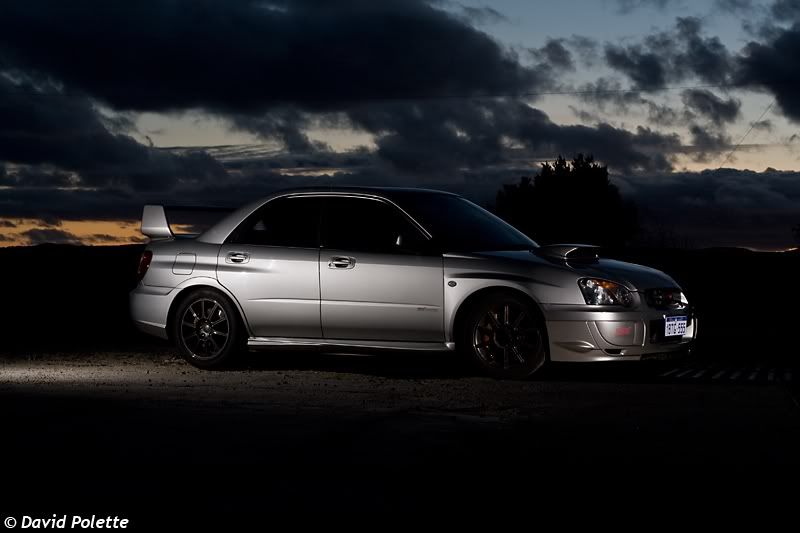Well done on the purchase. Could you perhaps show us an image of what you acquired, and also maybe a better description? Brand name and
models, etc. That will help us to better understand what you're working with.
You say you bought "tripods". Were they really tripods, or are they proper light stands? While tripods will work, light stands will generally provide your lights with greater working height: you will have trouble, for instance, illuminating the roof of the car with lights mounted upon tripods, where you're unlikely to see any such issues when working with lightstands.
The first thing about working with flash is that you need to understand that it's a small, intense light source, and as such, that is going to introduce harsh shadows into your image. Occasionally this might be what you want, but usually that will not be the case. Look at your first image: you can see the spread of the light towards the car coming in from the right, and under the rear of the car there are harsh shadows. Neither of these artifacts adds to the image.
In order to address this potential problem, you need to try to make the light source as large, and as diffuse, as you can. Typically this will be done through the use of light
modifiers such as brollies or softboxes, any of which have the effect of reducing the available power of the flash heads, which in turn affects your exposure choices.
Bottom line: you need a fair bit of flash power to shoot a car.
Closely related all of this is the fact that light sources have a tendency to reflect off shiny surfaces, and again this is evident through the hot spots in these images. These are difficult to avoid; large light sources can help to reduce this, and light tents even moreso. of course, for shooting cars, you need a rather large light tent, often referred to as a studio.

If you search the forum, you will find some details of how make your own softboxes; it's pretty easy. Commercial ones can be had from just a few bucks up to values just short of Unca Kev's Simulus.
Bottom line: try to make the apparent light source - the front of the softbox - as big as practicable.
Brollies are very useful, and give good surface area, which equates to a large apparent light source. They're not too expensive, but you probably lose more light with a brolly through extra distance that the light needs to travel through, plus through the expanded surface area, and thus your flash head's power again comes into play.
Important point to note: your exposure is determined by the distance that the light needs to travel from the light source to your subject, along with the power (intensity) of that light source. If you increase the light source to subject distance, you probably need to increase the power available at the light source.
With larger, broader and more powerful light sources, you can reduce the light falloff. Look at the left rear corner of the car in image 1: there's not a lot of light there, is there?
Now, one other technique you may wish to think about is light painting. This would let you use small flash heads - just one, in fact - and get some stunning images. You'll need to have fast recycle times on your flash, and you need to keep yourself out of the way of the light emitted by the flash, and keep the flash out of the field of view of the camera.
Set up your subject and camera positions, open the camera's shutter for, say 25 or 30 seconds. Try f/8 or f/11 as a starting point. Working quickly, manually pop the flash several times, at different parts of the car, from different places, trying to evenly illuminate the whole of the vehicle. Basically, walk quickly around the car, hand triggering the flash from different places around it while the shutter is open.
Examine your image, adjusting your aperture and flash positions as needed.



















